A new report finds Australian homes with solar power and other energy efficiency upgrades aren’t just saving their owners big on bills, but also providing a significant price premium when they sell their houses.
How Much Value Do Solar Panels Add To Australian Homes?
Short answer: between around $14,000 and $31,000, or between +1.6% and +6.9% depending on where in Australia the home is located.
Longer answer: New insights from Cotality (formerly CoreLogic) looked at how rooftop solar power system uptake and energy efficiency upgrades have been shaping property values and house buyer behaviour in Australia.
Calculating the lift in value solar provides was based on the presence of solar panels versus none, with all other attributes held constant (and home batteries were not factored in). Values were based on 12 months sales data to 15 April 2025.
Capital City Solar Value Add:
- ACT: $23,285 (+2.1%)
- Adelaide: $14,093 (+1.7%)
- Brisbane: $30,219 (+3.3%)
- Darwin: $20,332 (+2.8%)
- Hobart: $30,459 (+5.4%)
- Melbourne: $24,360 (+2.8%)
- Perth: $14,939 (+2.1%)
- Sydney: $19,179 (+1.6%)
In a graph:
Regional Area Solar Value Add:
- Regional SA: $22,272 (+4.7%)
- Regional QLD: $28,102 (+3.6%)
- Regional NT: $31,350 (+6.9%)
- Regional TAS: $18,232 (+3.1%)
- Regional VIC: $18,892 (+3.1%)
- Regional WA: $22,594 (+4%)
- Regional NSW: $23,568 (+3.2%)
In a graph:
Nationally, the value boost averaged $23,107; +2.7%.
If you’ve read other reports taking a stab at how much solar boosts an Australian home’s value, some of the figures provided are incredibly high — much higher than Cotality estimates. Often that’s because those reports are very old, and/or based on figures from the USA where solar is much more expensive.
However, the comparatively low cost of installing home solar in Australia still makes for a very good investment based on Cotality’s findings; especially considering the homeowner saves money through use of system before the property is sold.
“A solar power system is one of the few home energy-efficient upgrades that is both easily recognised by buyers and reliably measurable in valuation models,” says the firm.
But while an existing system may be attractive to house buyers, there are issues they need to be aware of. Pick up some tips on buying a home with solar panels already installed.
How Much Value Do Energy Efficiency Upgrades Add?
Cotality also looked at how much an estimated additional Nationwide House Energy Rating Scheme (NatHERS) star increased a home’s value.
NatHERS measures the energy efficiency of a residential dwelling — rating the building’s thermal performance (heating and cooling requirements) — using a star rating system out of 10. A house with a higher star rating should be more comfortable, have lower energy bills, and installing heating and cooling system costs should also be lower.
The minimum NatHERS rating for new homes these days is 7-stars. Homes built before 2003 have an average rating of just 1.5 stars. According to Cotality, more than 70% of Australia’s housing stock (not including apartments) sits below four stars.
With an additional NatHERS star:
Capital Cities (median uplift)
- ACT: $12,271 (+1.4%)
- Adelaide: $9,011 (+0.9%)
- Brisbane: $3,749 (+0.4%)
- Darwin: $32,946 (+4.5%)
- Hobart: $10,294 (+1.4%)
- Melbourne: $8,217 (+1.1%)
- Perth: $15,584 (+1.8%)
- Sydney: $21,350 (+1.4%)
Regional Areas (median uplift):
- Regional SA: $12,560 (+2.7%)
- Regional QLD: $7,091 (+0.9%)
- Regional NT: $5,973 (+1.6%)
- Regional TAS: $11,078 (+2.2%)
- Regional VIC: $4,938 (+0.8%)
- Regional WA: $14,598 (+2.3%)
- Regional NSW: $7,909 (+1.2%)
And in a graph:
The national median works out to $10,560; +1.3%.
“Our findings highlight that homes with energy and efficiency upgrades are delivering not only long-term energy bill savings and comfort, but also measurable price premiums at a time when cost-of-living concerns are top of mind for Australians,” said Tom Coad, Senior Director, Banking and Finance at Cotality Australia.
For further figures, commentary and details on methodology, the full Cotality “Watts It Worth” report can be accessed here.

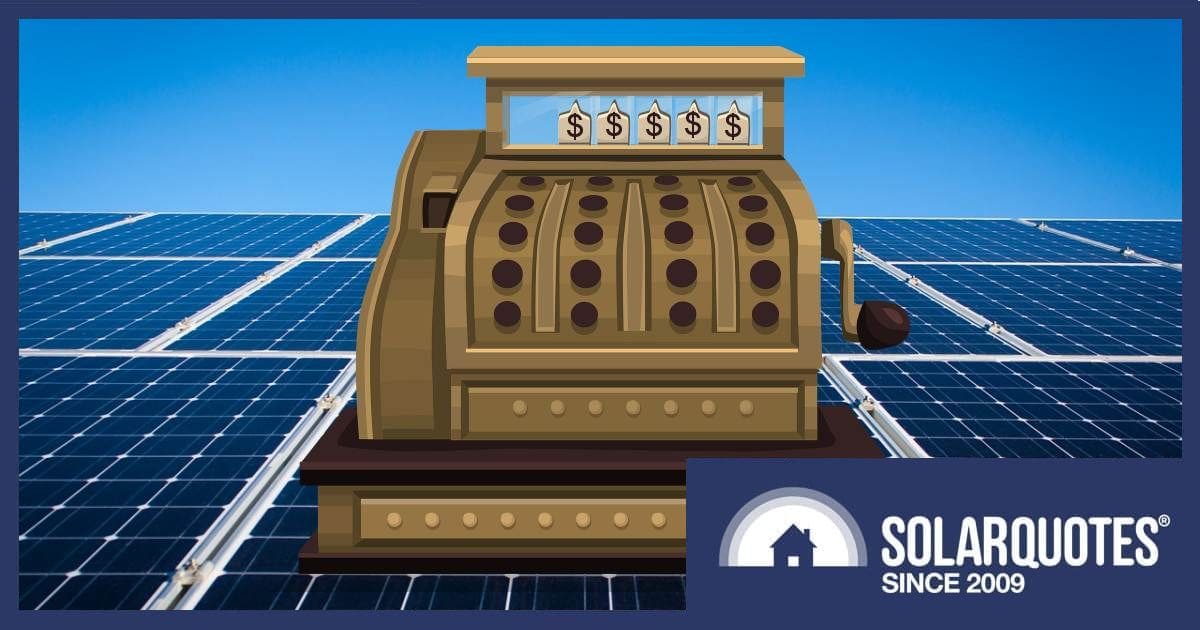
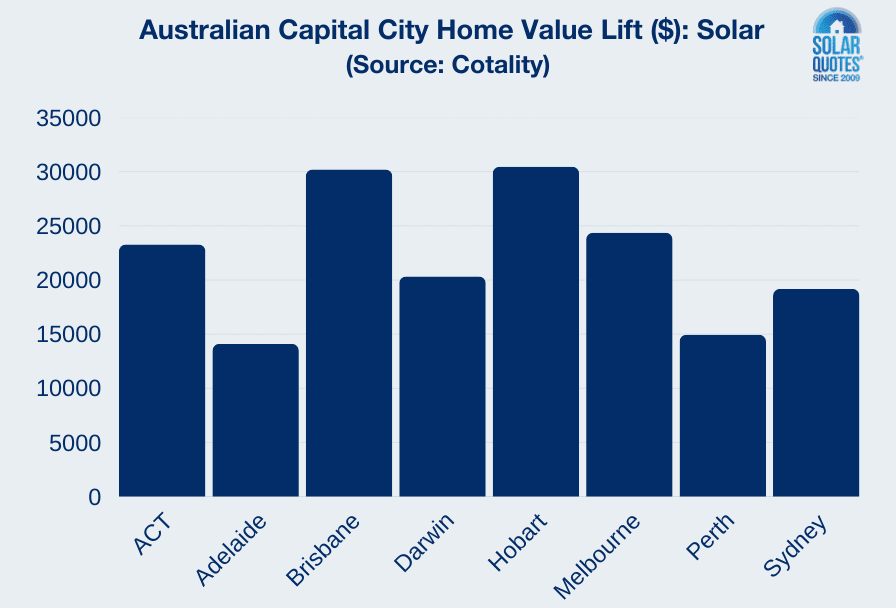
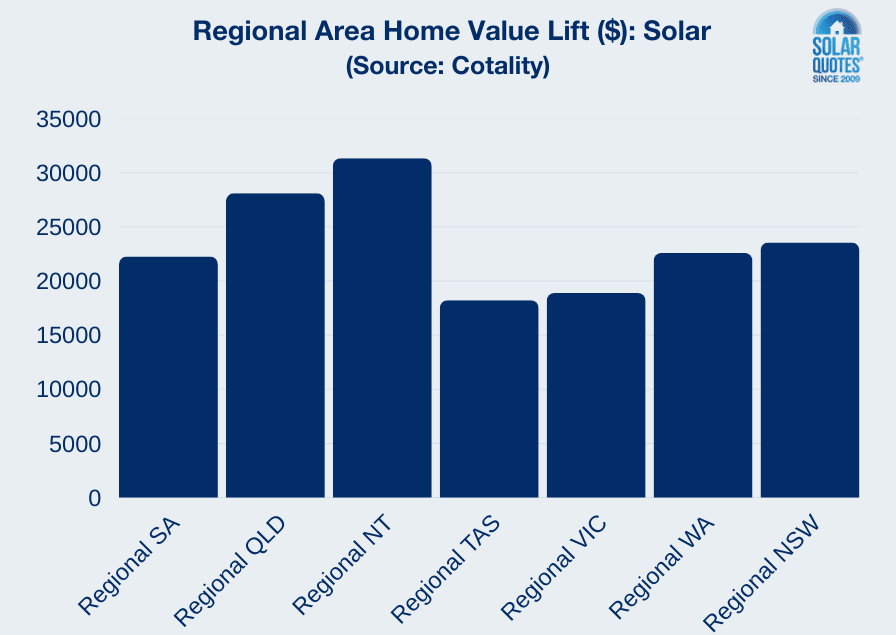
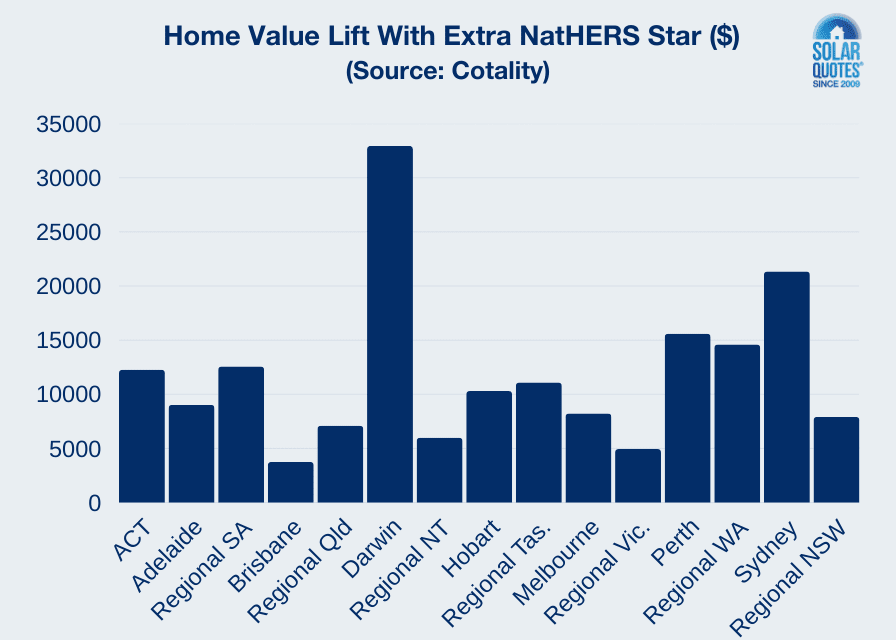
 RSS - Posts
RSS - Posts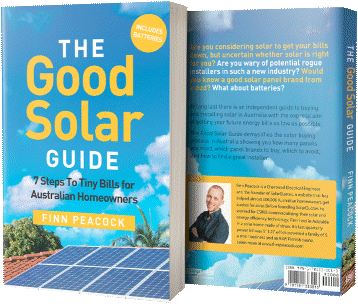


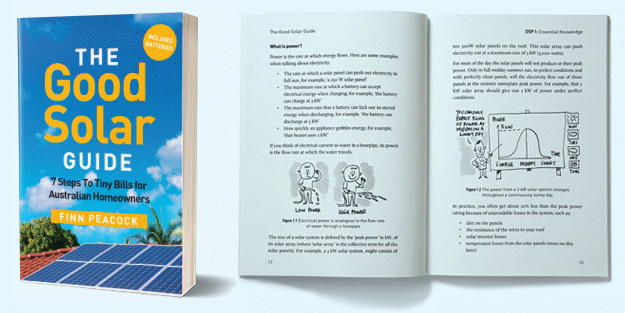
I would like to see a mandatory NatHERS rating provided at time of sale or a new lease.
Hopefully reports like this will encourage voluntary provision.
Be careful what you wish for, enough of govco interference / regulation, bureaucracy and red tape.
Trying to force improved ratings on people already under pressure with cost of living, retirees, etc.
Voluntary provision indeed based on what an individual homeowner feels fine is enough . . . mandatory ratings could easily be introduced by some ideological govco to make forced changes before a sale can be made.
Governments should encourage the use of gable roofs on new homes and discourage hip roofs.
Good luck with that. They couldn’t even get developers to stop putting black roofs on the housing estates in Western Sydney.
I would like to read the report, as real estate agents tell you solar is worth nothing on resale value
The industry here is just so good, regulation seems generally spot on.
The US remarks, they are widely unregulated there, lots of scams, they tie in very long term expensive finance to solar, usually at least double (!), which is already very high cost in comparison to Oz, I have seen cost of solar / battery 4x . . . even 6 x for comparable systems.
Their situation is reversed with solar and home prices, buyers don’t want solar usually, aesthetics, and (usually unwarranted) concerns of safety, but mostly finance is switched to a new owner, or there are contractual issues.
Most don’t want the excessive cost of someone else’s financed solar, have to pay it out, or have it removed, and simply pass on these homes.
Whilst it is encouraging to see how property values increase with solar and energy efficiency, I would add that some of this apparent increase is due to the demographic and behaviour of the owners. That is, owners who have solar and energy effcient houses are more likely to care for them well than those who don’t. So we are possibly not comparing houses of the same quality.
Anyway since the increases are bigger than the capital cost of the improvments, you are most likely still ahead. Not trying to be negative…just nerdy
Does the report address methodology at all? Yes you say the value was “based on the presence of solar panels versus none, with all other attributes held constant … 12 months sales data to 15 April 2025” but that doesn’t make clear if analysis was broken down to a suburb by suburb, and structure type e.g. 2, 3, 4, 5 etc bedroom house or unit level. Obviously there was a capital cities v rest of the states divide, but that’s very crude level!
Depending on the methodology the ‘value of solar panels’ could simply be the difference in buying habits of those who can afford panels versus those who can’t e.g. homeowners in the most expensive parts of Sydney can afford them, those in the most impoverished parts can’t. That’s an extreme, and largely absurd example, but illustrates how garbage in could mean garbage out.
Hi John,
For many years I’ve seen first hand that the suburbs who could “least afford it” were the ones who had the greatest uptake.
It’s happening again with EV uptake in the newest & furthest flung extremes of the ridiculously sprawled suburbs which don’t have public transport.
A decade ago I was doing regular 800km trips to country Ceduna because the locals were savvy and they were taking up solar.
The inner city population were the ones who could simply afford to pay for power.
They’ve in fact been the ones driving the greatest need for grid upgrades running large houses with large air conditioning loads.
How is this a good thing the prices of homes are over valued now
After reading through the reviews, I believe the comments raised are all based on finances. We have both solar and batteries, which cost us more than most. The reason for the higher cost was due to our buying what we could afford at the time, then adding and upgrading the system. We have now found that the feed-in tariffs plus the in-house solar savings have more than covered the total cost of our system. In fact, at the moment we are so far in front we are considering doubling the size of our batteries. It all comes down to how you budget your money, not how much you have.
An important fact that Finn has pointed out is that you must take the time to record your daily output of solar energy
A small downside if you’re not selling is your yearly council rates will go up because your house is worth more !!
Not sure how it works where you live but our council rates (in NSW) are based on the land value as provided by the Valuer General. The value of the house has no effect.
For a long time I have argued that the payback period for solar and batteries is almost immediate due to the increased value of the dwelling.
We have also retrofitted double glazing and energy efficient cooking and water heating, and I am certain that future buyers will increasingly value these improvements that make life more comfortable and less expensive.
Unlike the US norm, I don’t think that many Australian systems are directly financed.
House and land counted here !!
Oh! Bad luck. 🙁
Who does the valuation on your house?
Council but very accurate estate agents often use them as a guide !!
In relation to fire systems eg misting, powered by electricity, the recommendation is that there be a motor be available as a standby in case the grid is turned off. This does happen sometimes when there is a bushfire.
I hope to have a system installed where the battery can power the fire system when and if this happens. This apparently requires a bit more cost (at least in WA) and installers are generally not creating this option of selective back up for certain items.
Finn mentions that European countries can have ‘intelligent power points’, so why can’t we. I imagine this is the sort of situation he is talking about.
Depends on the age and quality of the solar system. Personally I’d rather buy a house with nothing than poor potentially unsafe kit.
Ha. I was just thinking the opposite. At least it has all been decided for you and there is nothing to think about.
I sometimes feel like you need a degree in Electrical Engineering to keep on top of all this stuff.
From what I have seen over the Past 7 years of cleaning solar panels in Central Queensland! I would strongly encourage those buying houses with solar to not only get the standard building inspection. But also request to get the solar system inspected and tested as well, of course by a qualified solar electrician. As I have been to many homes for new owners that have bought the house “with solar” to find Old faulty systems, even at times system not even working! So if they are saying that Solar increases the value of the house? The owner and or the buyer should be getting it inspected. The area is am in is huge industry and coal mines. And believe me “the rain does NOT clean the solar panels!”